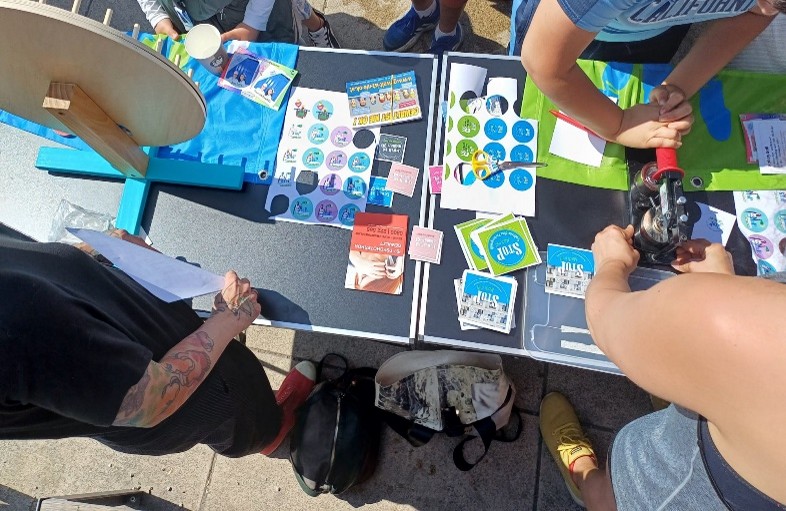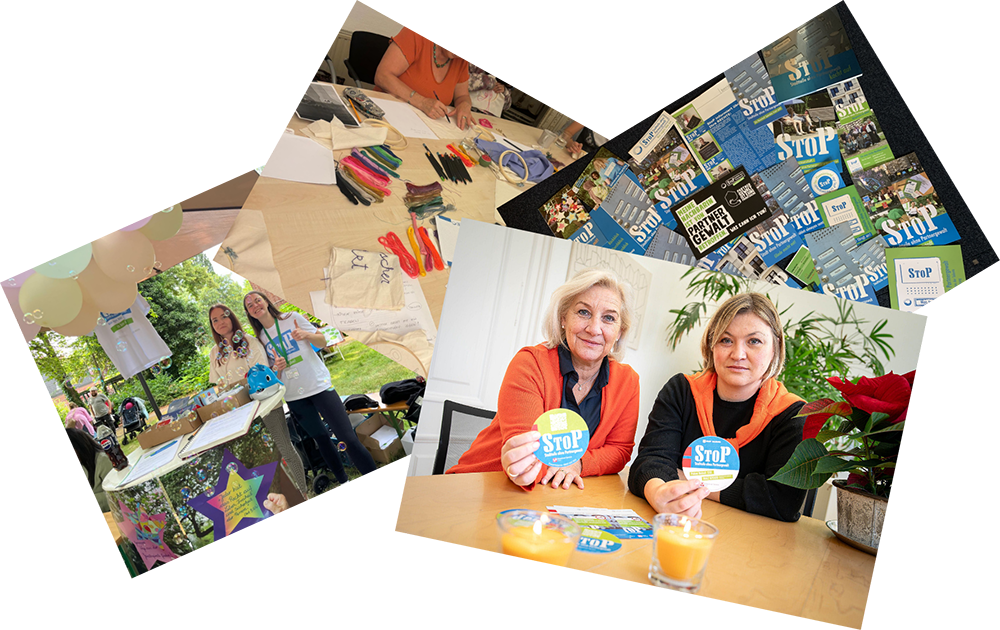Why
At StoP, the term “community” refers primarily to the immediate neighbourhood, to the local community. This is where people live, work and spend their leisure time. We understand community as something people create together and in the sense that everyone contributes and can make a difference.
Local sports associations and clubs reach a wide population and should be considered for networking and relationship-building work in StoP, as well as for changing awareness about domestic violence among coaches and sports practitioners. Sports clubs, i.e. the owners and managers of sports clubs, have a special significance and importance; they not only engage in sporting activities and promote sporting achievements, but they are also role models! They are opinion leaders, they convey awareness, social values, norms and reinforce behaviour that can have a positive or negative impact on athletes.
What
In order to win over this group for StoP involvement, it is first necessary to identify them and establish initial contact. This is part of the second step of the StoP concept, the community assessment, in which the district is explored and associations and organisations are identified, especially local leaders and stakeholders who are particularly important and well connected. The fifth step is to consolidate these relationships and to address and mobilise them in a specific way. This requires targeted invitations, prior knowledge of the club and the sport, and persuasion. Here is an example from StoP Vienna Margareten, where a football club was enthusiastic about StoP from the start.
The chairman of MAC Margareten AC (the oldest football club in Vienna) was officially asked to become a StoP partner in the early stages of StoP. He was later contacted again by the StoP team and he was also invited to the StoP men's group in Margareten, accepted the invitation and has remained a StoP partner to this day.
His commitment is exemplary. He convinced his team of the benefits of StoP and at the kick-off of 2021 he had all the football shirts printed with the StoP logo and a large StoP banner hung on the football fence. Preparations had begun several months earlier.
This was the first public sign and statement, and it also marked the start of internal awareness-raising work because, according to the chairman.
“Football players who are conspicuous and violent on the playground may also be violent at home against their partners and their own children, so the sports club is a place and an opportunity to raise awareness and, above all, to change behaviour and awareness. This pattern of violence must also be broken and stopped by the coaches and the whole committee.”
The StoP partnership is therefore a strong sign of civil courage against domestic violence, both internally and externally. Sporting opponents and football fans are made aware of the need for non-violent and fair coexistence. Football clubs as many others sports clubs are primarily addressing male members of society, which is particularly relevant for the work of StoP.
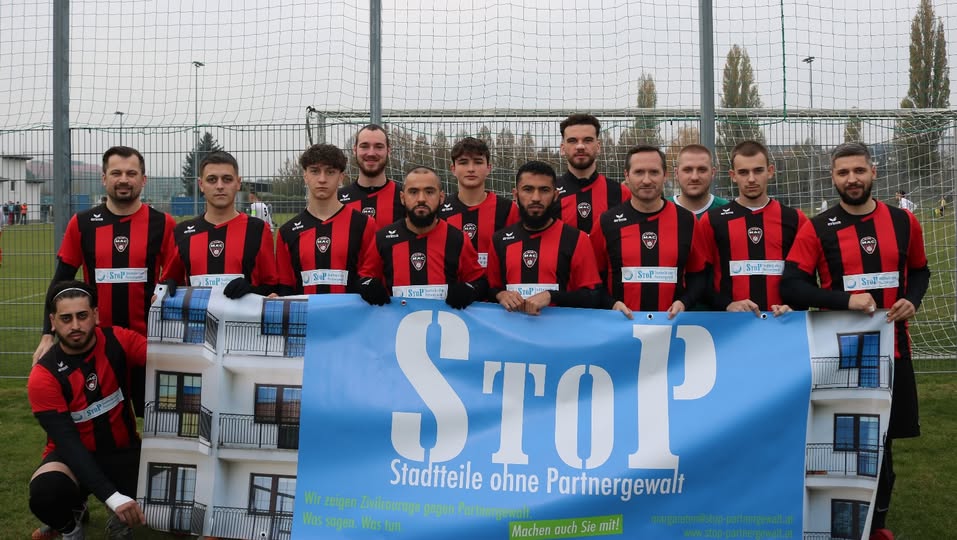

Objectives
- ongoing cultivation of contacts and development of relationships in sports organisations/at various games and championships at national and international level.
- recruit as many committed (well-known) athletes, elite athletes and coaches as possible to take part in StoP and have their say.
- raise awareness through role models and multipliers. Sports clubs are mostly men's places (management and coaches are mostly male), so it is particularly important to create a changed awareness here.
- give sports organisations the feeling that they are part of a big change in awareness and that they are an important and appreciated part of the StoP movement
Facilitators guide
The considerations and preparations listed under ”What“ or “Steps/Actions” are based on experience and serve as recommendations that can be observed, implemented and possibly adapted to the situation.
Time and people needed
To reach out explicitly to the sports sector, it does not need a separate StoP team or resources, but if there are male StoP organisers and already a StoP men's group, this should be part of their work. Sports clubs as places for all gender and often especially men should always be given special consideration as important network partners, key players and multipliers.
Not only the StoP organizer, committed neighbours should also be mobilised and involved in inviting and writing to sports clubs with which they have contact.
Particularly at the beginning of neighbourhood work, a certain amount of time, at least two hours per week, should be allowed for. It is important to remember that joint activities and campaigns are particularly time-consuming and require more planning.
Target groups
- Operators and owners of sports clubs and facilities
- Coaches, presidents
- Committed and well-known athletes as key figures and multipliers
- Politically active people – starting with the mayor, city or district councillor, etc.
- Funding bodies for the sports sector/Ministry of Sport, if any
- European championships and football championships support departments
- Generally men/athletes as allies
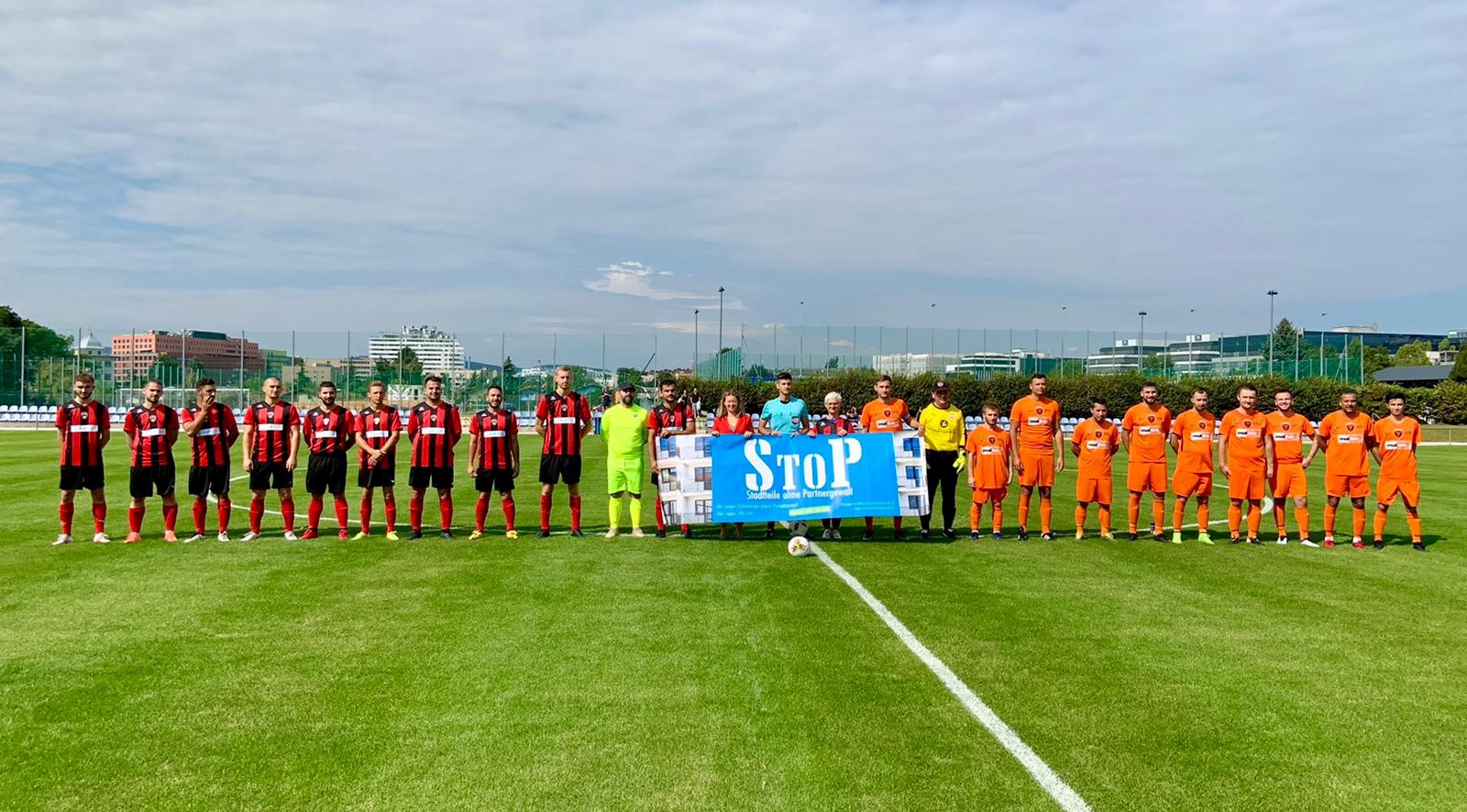
Steps / Action
- pay special attention to the sports sector when exploring the neighbourhood (action step 2). Sports clubs are places for young people, but also places where mainly and predominantly men spend their time, work and leisure.
- Contact sports club managers – either in person or in writing.
- Invite sports clubs to become StoP partner organisations.
- Arrange and conduct one-to-one meetings with sports organisers or high profile athletes and coaches.
- Make concrete offers:
- Workshops, multiplier seminars, civil courage seminars with the board, with coaches, with athletes, etc. Offer materials: provide StoP logo for shirts Production of a StoP banner as an integral part of events Organise joint press and public relations work: launch event with press releases or press conference. Joint campaigning, especially during the 16 Days of Activism against Violence against Women, see (3) The international... - StoP Vienna - Neighbourhoods without partner violence | Facebook
- Ongoing networking and relationship work with the sports sector
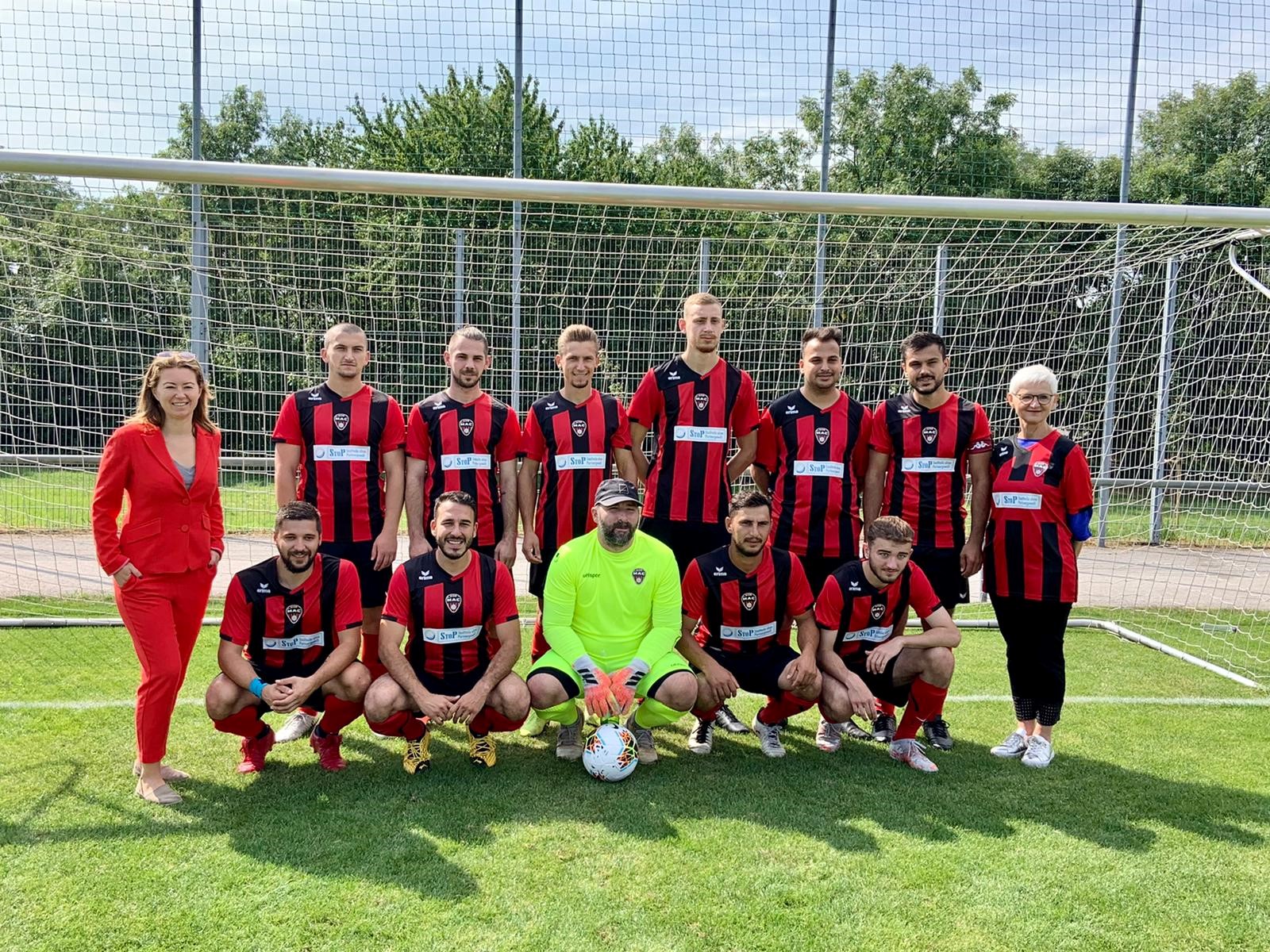
Material
- StoP materials (flyers, stickers, banners, roll-ups, etc.)
- Provide StoP logo for sports shirts
- Provide StoP banners for sports events
- Provide funding for materials and publicity
